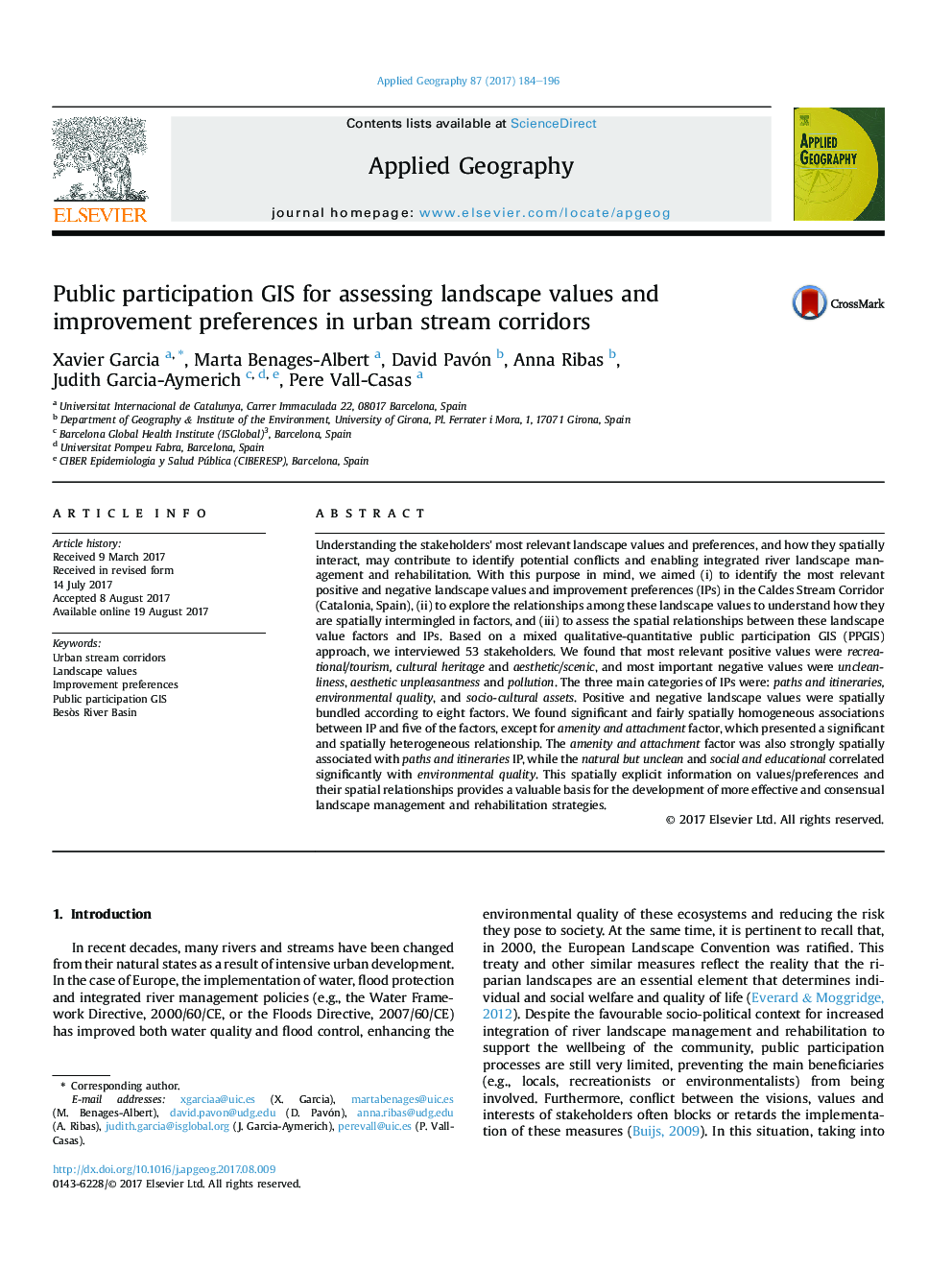| Article ID | Journal | Published Year | Pages | File Type |
|---|---|---|---|---|
| 6458390 | Applied Geography | 2017 | 13 Pages |
â¢Landscape values and improvement preferences in an urban stream corridor are assessed.â¢A total of 27 landscape values are identified and bundled into 8 factors, based on spatial relationships.â¢The preferred actions involve improving paths and itineraries, environmental quality and socio-cultural assets.â¢The amenity-attachment factor presents the most spatially heterogeneous relationship with improvement preferences.â¢Place-based decision-making that integrates local values and preferences is required.
Understanding the stakeholders' most relevant landscape values and preferences, and how they spatially interact, may contribute to identify potential conflicts and enabling integrated river landscape management and rehabilitation. With this purpose in mind, we aimed (i) to identify the most relevant positive and negative landscape values and improvement preferences (IPs) in the Caldes Stream Corridor (Catalonia, Spain), (ii) to explore the relationships among these landscape values to understand how they are spatially intermingled in factors, and (iii) to assess the spatial relationships between these landscape value factors and IPs. Based on a mixed qualitative-quantitative public participation GIS (PPGIS) approach, we interviewed 53 stakeholders. We found that most relevant positive values were recreational/tourism, cultural heritage and aesthetic/scenic, and most important negative values were uncleanliness, aesthetic unpleasantness and pollution. The three main categories of IPs were: paths and itineraries, environmental quality, and socio-cultural assets. Positive and negative landscape values were spatially bundled according to eight factors. We found significant and fairly spatially homogeneous associations between IP and five of the factors, except for amenity and attachment factor, which presented a significant and spatially heterogeneous relationship. The amenity and attachment factor was also strongly spatially associated with paths and itineraries IP, while the natural but unclean and social and educational correlated significantly with environmental quality. This spatially explicit information on values/preferences and their spatial relationships provides a valuable basis for the development of more effective and consensual landscape management and rehabilitation strategies.
